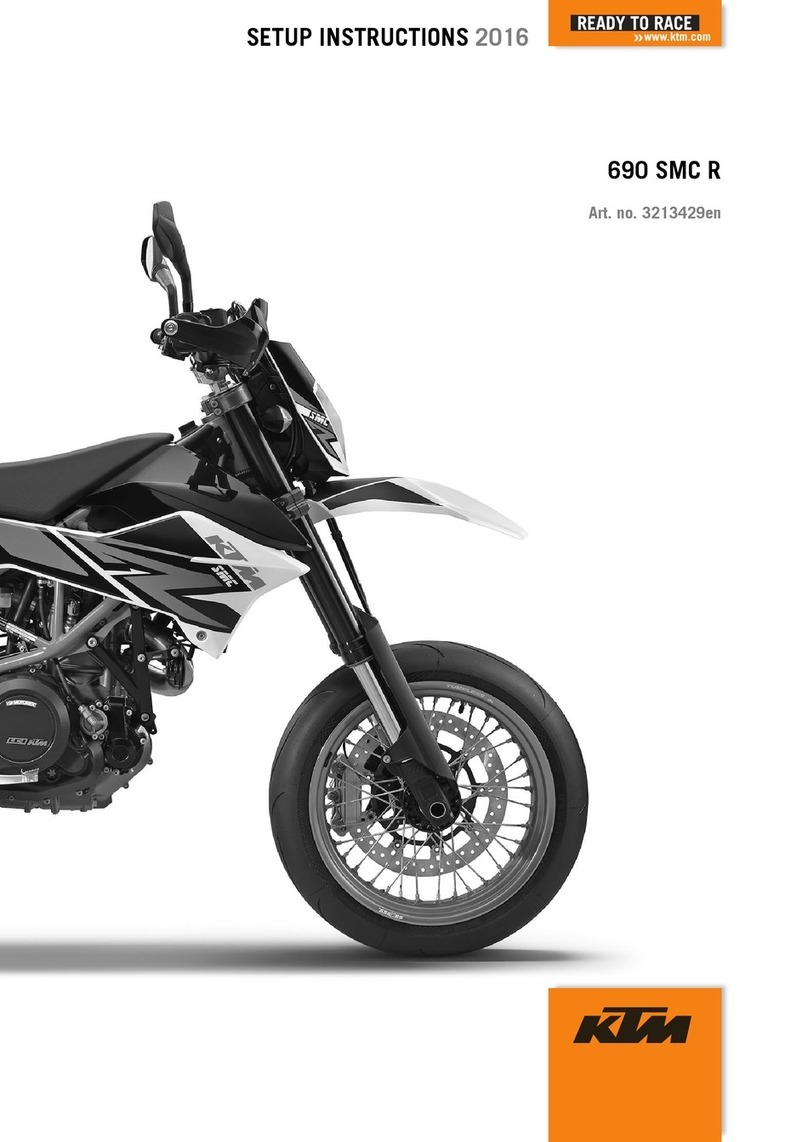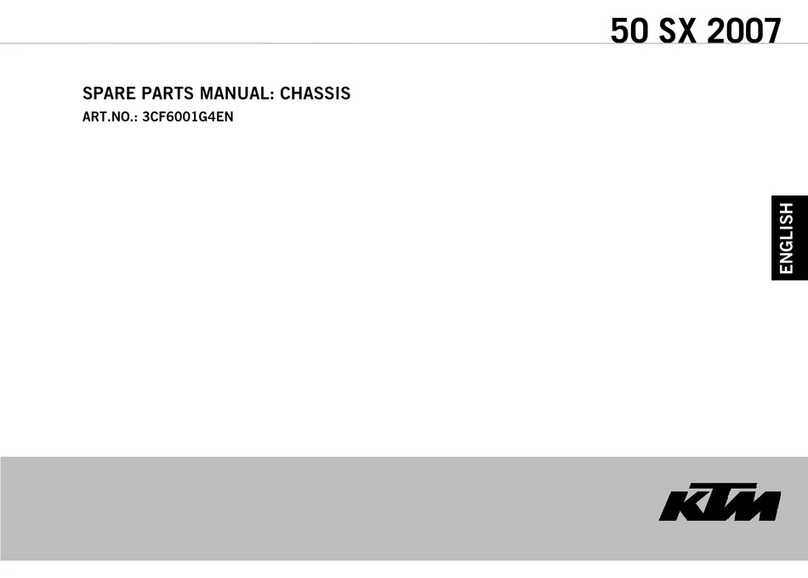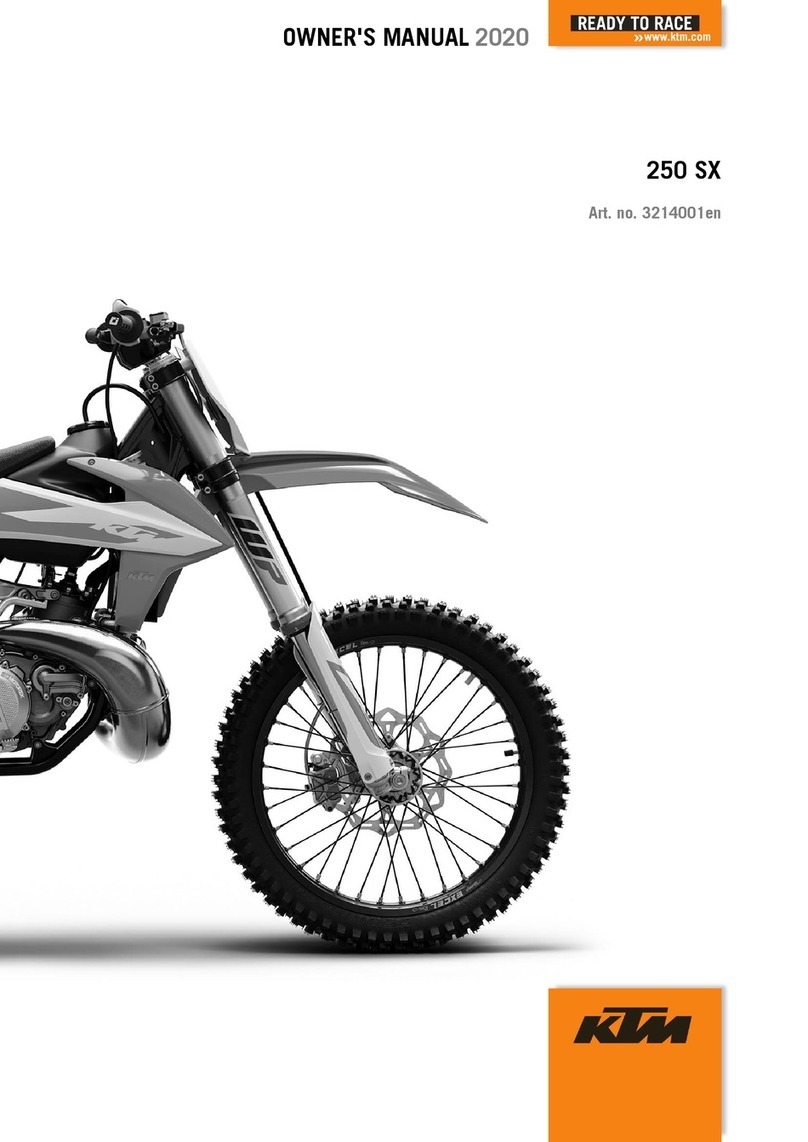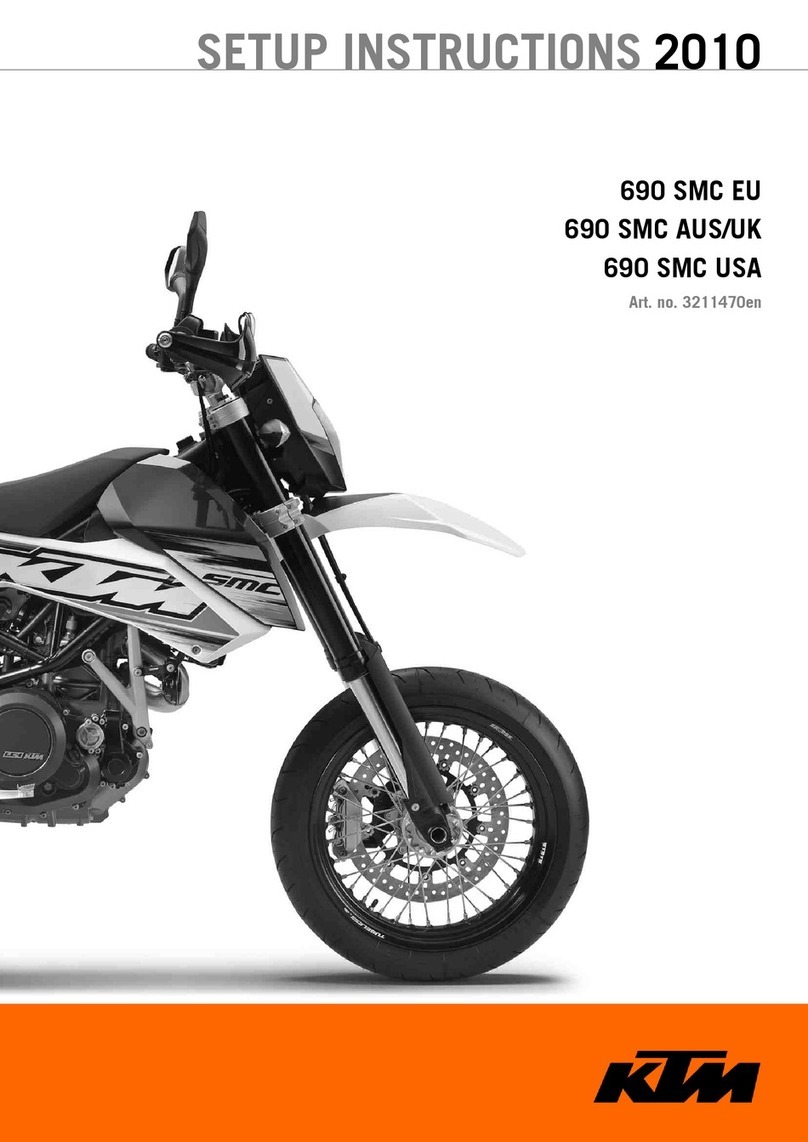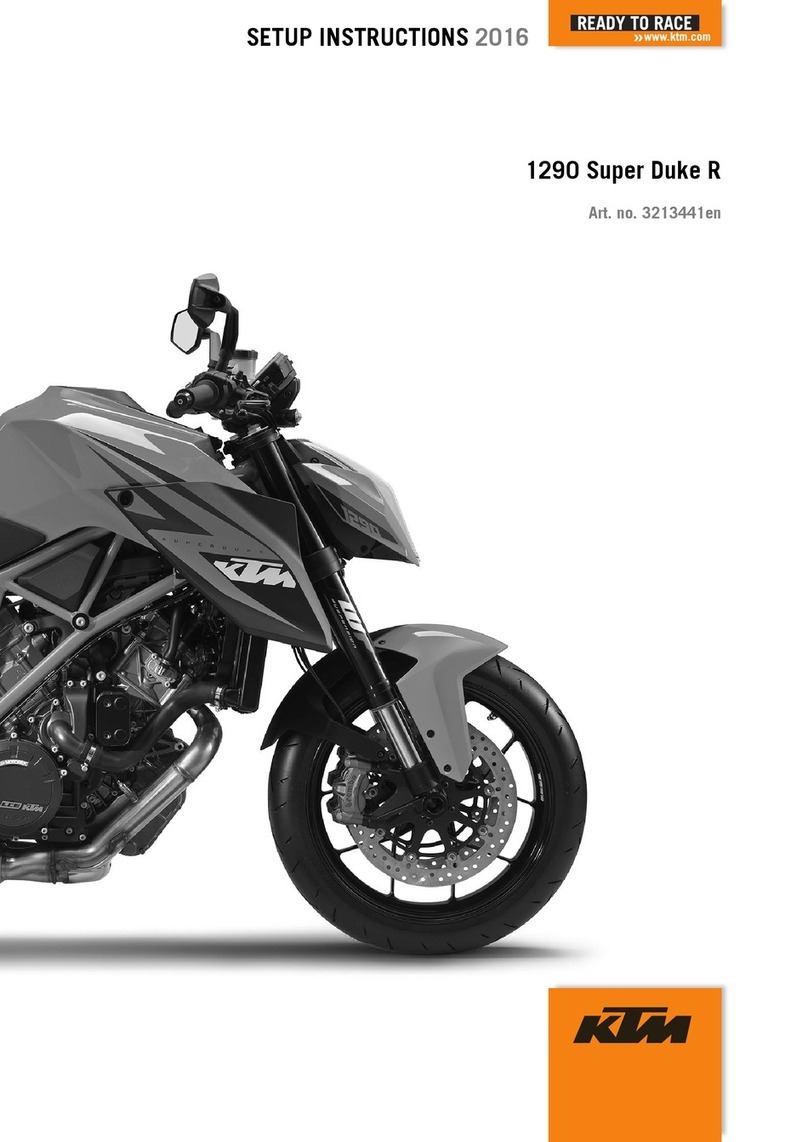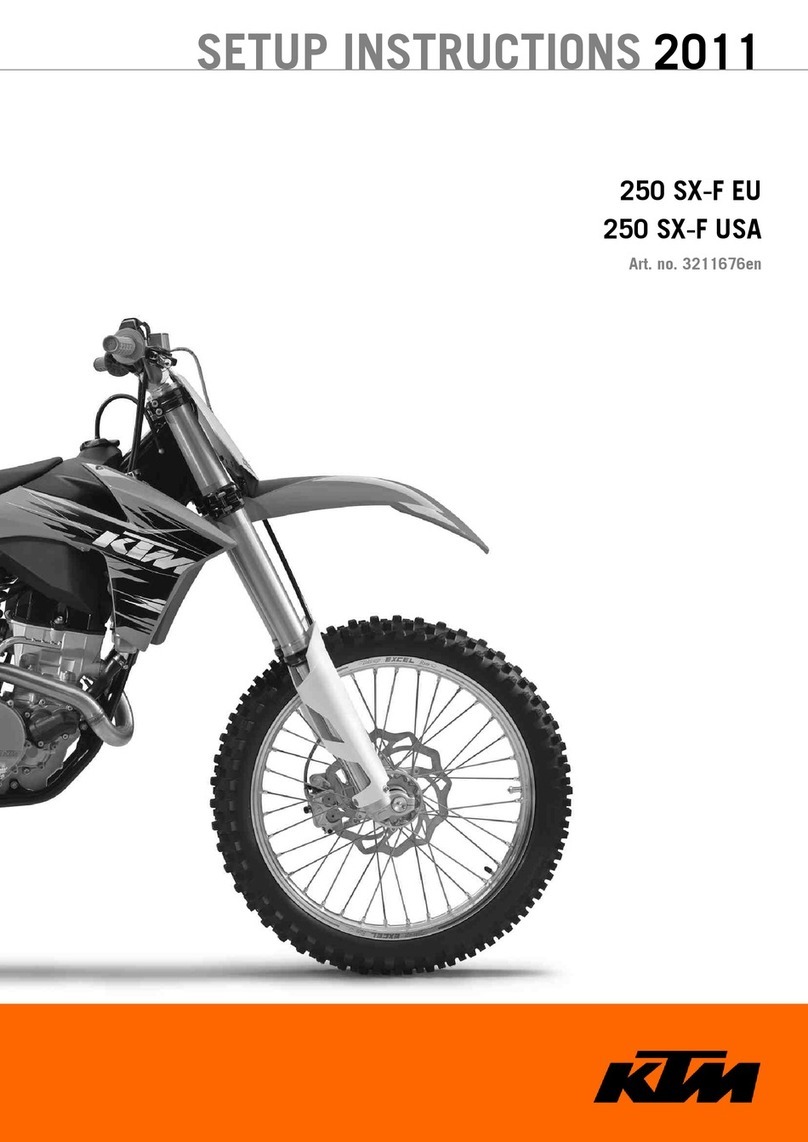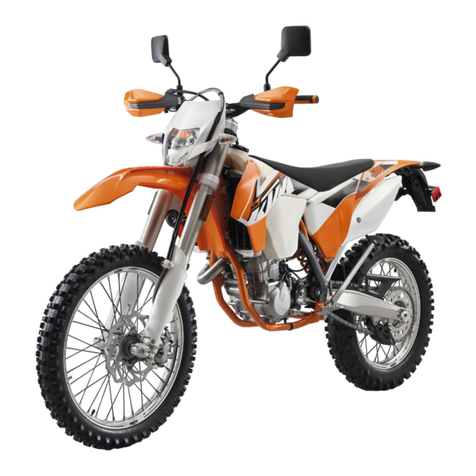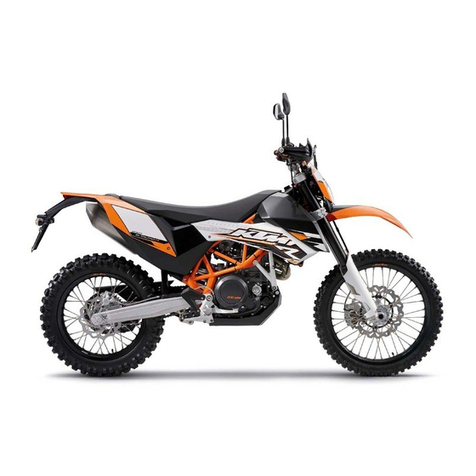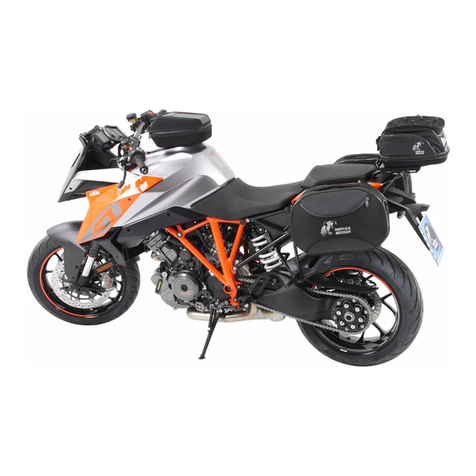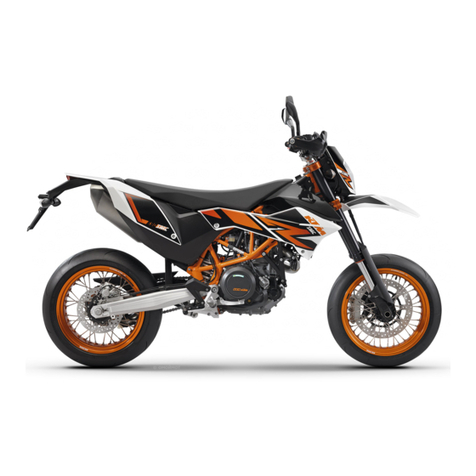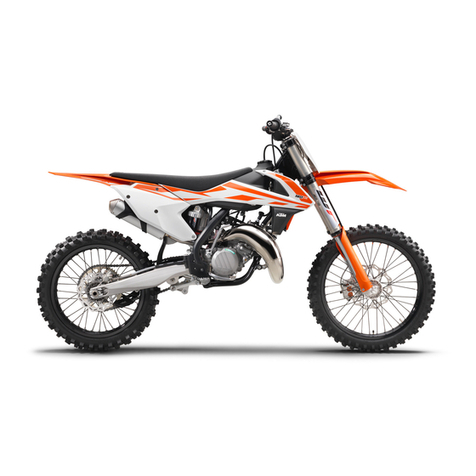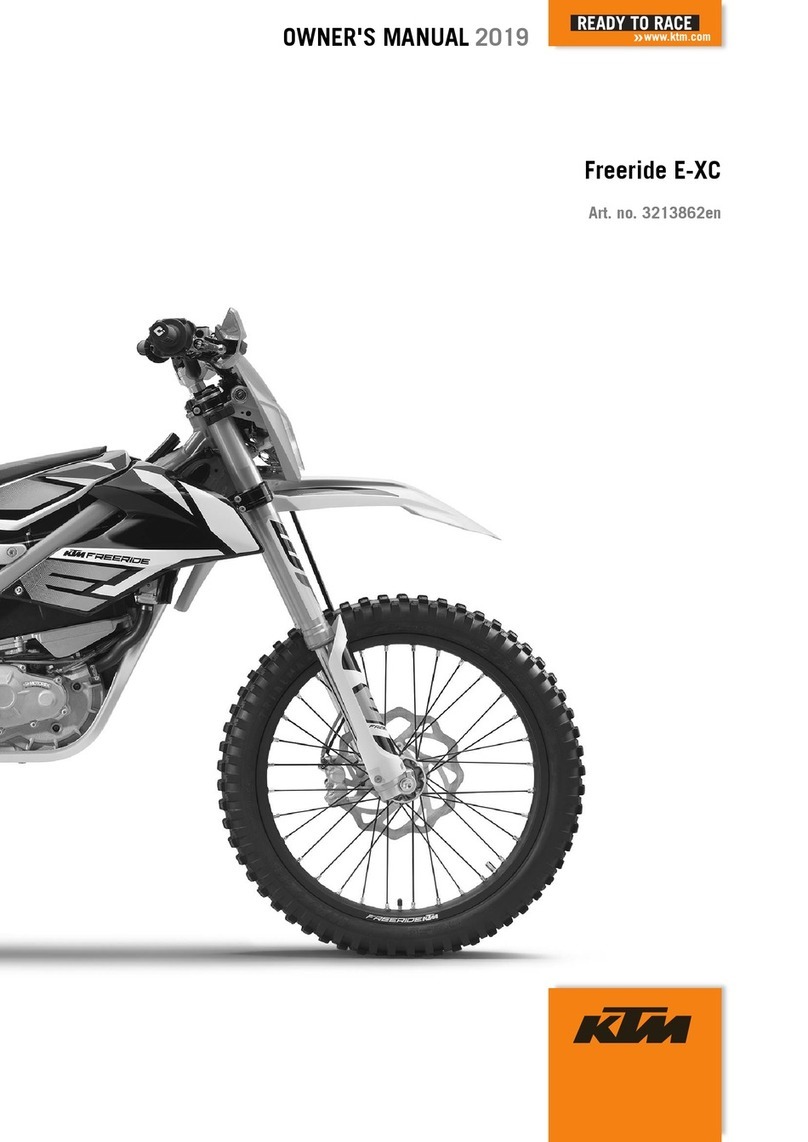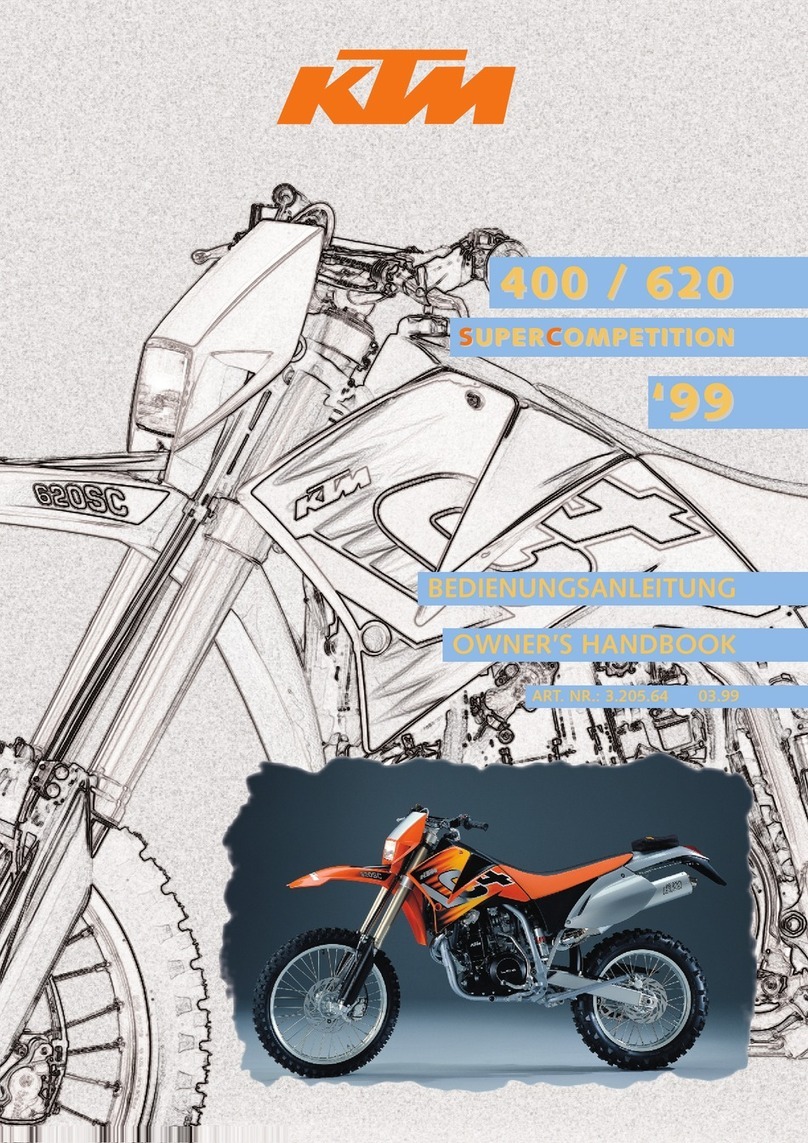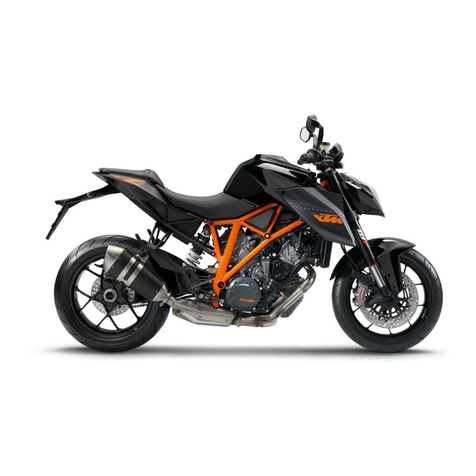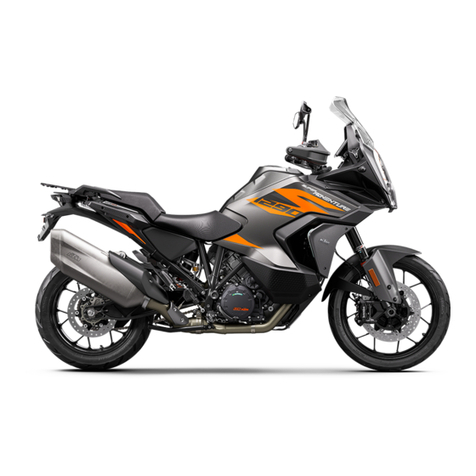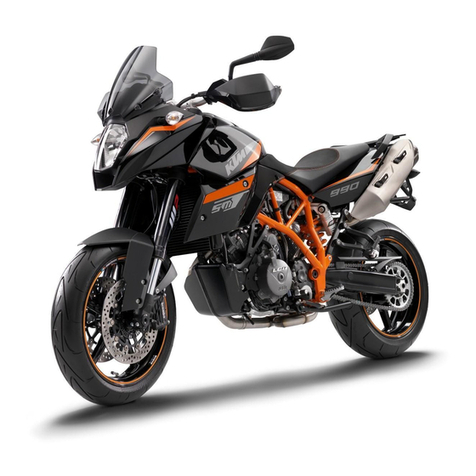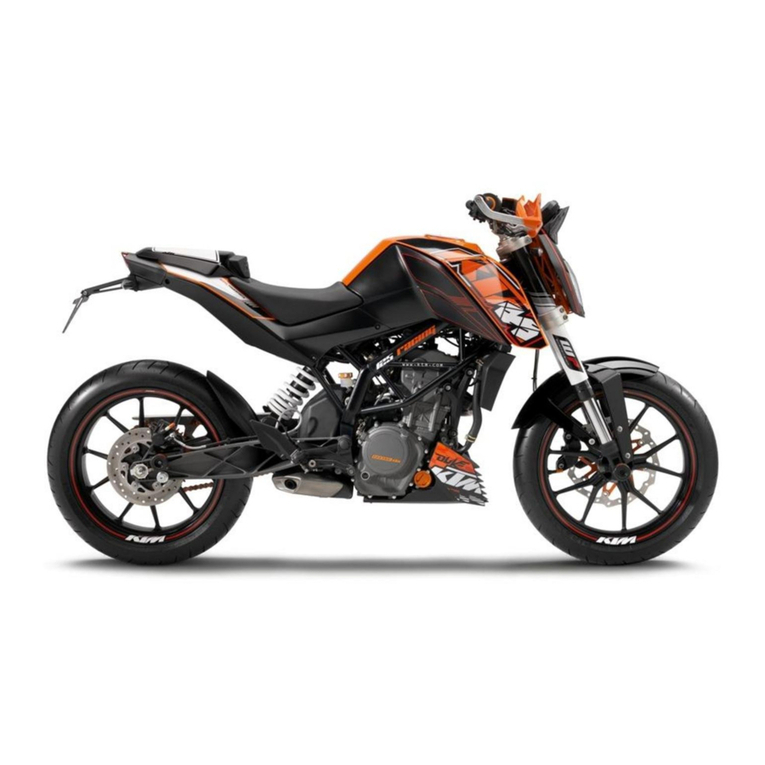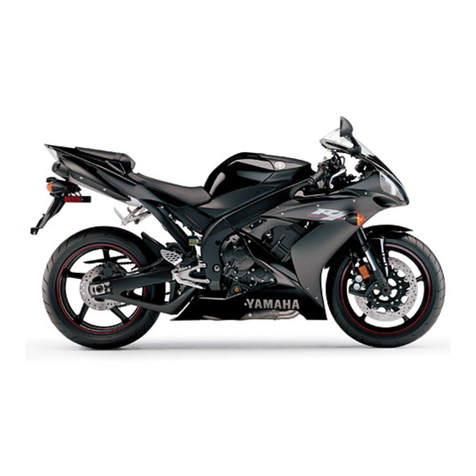
SETUP 2
5
F01045-10
–Mount rear reflector 1with spring washers 2on holding
plate 3.
–Mount the retaining plate on the license plate holder.
–Mount the license plate holder.
–Carefully loosen and remove the tension belt over the link fork.
Info
An assistant prevents the motorcycle from falling over.
–Carefully loosen and remove the tension belts around the lower
triple clamp.
The vehicle is released at the front.
–Together with an assistant, take the vehicle off the pallet.
–Remove the passenger seat. ( p. 8)
E01183-01
–Take tool set out of the separate enclosure and fasten onto the
bottom of the passenger seat using the rubber straps provided
in the tool set.
–Remove the front rider's seat. ( p. 9)
–Remove spare key and KEYCODECARD from under the seat and
keep in a safe place for the handover.
Warning
Risk of injury Battery acid and battery gases cause
serious chemical burns.
–Keep 12 V batteries out of the reach of children.
–Wear suitable protective clothing and safety
glasses.
–Avoid contact with battery acid and battery gases.
–Keep sparks or open flames away from the 12 V
battery.
–Only charge 12 V batteries in well-ventilated
rooms.
–Rinse the affected area immediately with plenty of
water in the event of contact with the skin.
–Rinse eyes with water for at least 15 minutes and
consult a doctor immediately if battery acid and
battery gases get into the eyes.
–Fill the 12 V battery.
Info
Read the notes in the 12 V battery accessory pack.
–Charge the 12-V battery. ( p. 10)
–Install the 12-V battery. ( p. 12)
–Remove the remaining film, padding, the corrugated card-
board, and the other packaging material.
–Refuel. ( p. 14)
–Check the headlight setting. ( p. 15)
–Prepare the vehicle according to the specifications in
the KTM Dealer.net for handover to the customer.
